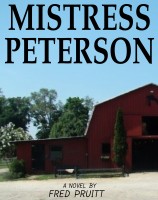Direct Translation via Google Translate. Edited.
[Regnum] Egyptologist Zahi Hawass and his team discovered graffiti in the Cheops pyramid with the names of work teams, calculations of days worked and records of payments. Archaeological excavations on the Giza plateau showed that the pyramids were built by professional workers, and not slaves, as was previously believed. RIA Novosti reported this on July 19.

Hawass noted that the builders, unlike the slaves, had the privilege of being buried in separate tombs. The necropolis contains graves with inscriptions and titles such as "overseer of the pyramid side" and "senior craftsman", which indirectly confirms their high social status.
"During excavations we found thousands of animal bones here, including the bones of 11 cows and 33 goats. This amount is enough to support about 10,000 workers a day," the Egyptologist said.
Near the pyramid, the Egyptology team also found a construction workers' settlement with houses, warehouses, bakeries and a hospital. Frescoes and papyri indicate that stone blocks were delivered by water through a branch of the Nile, which came right up to the plateau during high water.
Similar information is contained in an ancient papyrus from Wadi al-Jarf, which contains financial documents from the construction site. This fact was confirmed by French scientists in 2022, after analyzing soil samples and identifying traces of river vegetation.
Experiments have shown that a professional workforce could build the pyramid in 25 years using specialized block moving techniques.
As previously reported by Regnum News Agency, on July 5, archaeologists discovered well-preserved tombs of the Ptolemies and the Roman period in Aswan. They were found by a joint Egyptian-Italian expedition. A limestone sarcophagus with hieroglyphic inscriptions of a high-ranking dignitary, as well as mummies, including children, were found in the tombs. Secretary General of the Supreme Council of Antiquities of Egypt Mohamed Ismail Khaled said that tomography and biological analysis of the mummies are planned.
On April 19, in the city of Saqqara, south of Cairo, archaeologists discovered the tomb of Prince Waser-if-re, son of Pharaoh Userkaf, with hieroglyphic inscriptions and titles. Statues of Djoser, his wife and ten daughters were also found, which were later moved to the prince's tomb.

|











